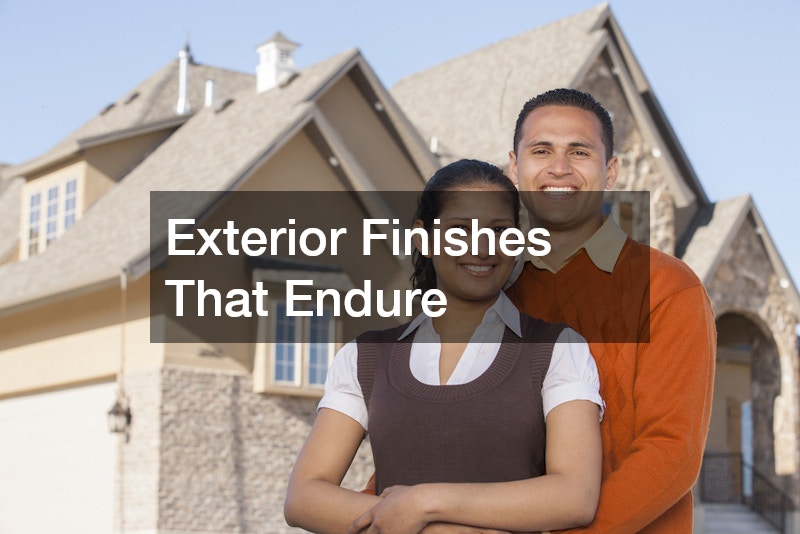Planning a custom home makeover is always an ambitious undertaking, but as 2025 approaches, the field feels richer and more intricate than ever. Homeowners no longer want simple cosmetic upgrades; they’re asking how each material, system, and floor-plan adjustment will serve them over the next three decades. A custom house remodel in 2025 means weaving together sustainability, resilience, technology, wellness, and flexibility, all while honoring budget and local building codes. Many of the hottest concepts were once niche-think advanced air-quality monitoring or rainwater reuse, but today they’re moving into the mainstream because they add measurable value and everyday comfort.
This trend guide highlights the biggest ideas poised to shape renovations in the coming year. From next-generation building envelopes to adaptable layouts that support remote careers, you’ll find practical insight for turning 2025’s buzzwords into buildable plans. Each section explores why the concept matters, how to execute it, and which specialists, architects, HVAC techs, or even a local stucco company, should lead the charge. By the end, you’ll have a roadmap for a remodel that looks fresh now yet stands strong for decades.
Sustainability Beyond the Basics
Eco-friendliness used to be as simple as adding extra insulation or swapping incandescent bulbs for LEDs. In 2025, sustainability embraces cradle-to-cradle thinking: materials get chosen not only for low embodied carbon but also for their end-of-life recyclability. Recycled steel, hemp-based batt insulation, and bamboo plywood are popular ingredients in a custom house remodel because they sequester or avoid large amounts of CO2. Many products now carry QR codes detailing supply-chain emissions, letting homeowners verify green claims instantly.
Circular design also means planning for disassembly during your custom house remodel. Rather than using permanent adhesives, contractors opt for mechanical fasteners so future upgrades create minimal waste. Flooring planks snap together without glue; cabinets can be removed and reused when layouts shift. These strategies make fiscal sense, too, since future renovations will cost less if elements aren’t destroyed in the process. Architects recommend designing “service voids” behind walls to allow plumbing or wiring swaps without major demolition. Over time, such foresight preserves the integrity of the remodel and its resale value.
High-Performance Building Envelopes
Energy codes tighten each cycle, and 2025 will be no different. Many jurisdictions already require exterior continuous insulation and aggressive air-sealing measures. A custom house remodel that seeks true high performance will feature double-stud walls or structural insulated panels that slash heating and cooling loads. Windows now boast triple glazing with argon fills and low-emissivity coatings that filter ultraviolet rays while letting in daylight.
Roof assemblies are evolving, too. Nail-base insulated sheathing reduces thermal bridging, and “vented over-roof” systems keep shingle temperatures lower, extending lifespan. Working with qualified roofing contractors ensures these advanced layers are installed correctly; improperly vented cavities risk condensation damage. Partnering early with a respected roofer familiar with modern membrane technology can prevent long-term leaks and integrate future solar arrays seamlessly into the roof deck. The payoff is lower energy bills, quieter interiors, and a shell ready to meet tomorrow’s stricter regulations.
Smarter HVAC and Healthy Air
Indoor air quality continues its climb up the priority ladder. Whole-home ERV systems exchange stale air for fresh while recovering heat, boosting efficiency. Variable-speed, inverter-driven heat pumps dominate new installs in moderate climates, while ultra-efficient new furnaces with sealed combustion and modulating burners still serve colder regions. If cooling units are aging, homeowners schedule proactive AC replacements that use low-GWP refrigerants, slashing greenhouse impact.
A holistic mechanical plan also covers maintenance. Regular air duct cleaning keeps pollen and construction dust from recirculating, extending system life. Smart thermostats learn occupancy patterns, pre-conditioning rooms when energy rates are lowest. Speaking to multiple HVAC consultants early can reveal rebates that cut upgrade costs dramatically. By intertwining efficiency with wellness, these systems transform everyday living comfort and slash utility bills.
Roofing Resilience and Solar Synergy
Storms are intensifying, making roof durability mission-critical. Impact-rated shingles and stone-coated metal tiles shrug off hail and hurricane-force winds, earning discounts from many insurers. Drone inspections, offered by numerous residential roofing companies, map weak spots before tear-off begins, and thermal cameras expose unseen moisture pockets. Integrating solar production is easier now that photovoltaic shingles blend almost invisibly into common profiles.
Selecting the right roofing contractors ensures proper flashing, underlayment layering, and ventilation. If ice-dam formation is a concern, self-heating cables and high-R fascia details can appear in the new design. All told, the roof becomes a multifunctional shield: protecting against water, harvesting energy, and venting attic air. That robust top layer supports the entire custom house remodel, letting other investments-like premium cabinetry or designer lighting-stay safe from leaks for decades.
Exterior Finishes That Endure
A long-lasting facade is equal parts beauty and science. Modified polymer coatings applied by a skilled local stucco company shrug off cracking better than cement-only mixes, while integral pigments eliminate repainting cycles. Fiber-cement lap siding imitates wood grain but resists rot and pests. For accent walls, charred-wood planks (shou sugi ban) deliver dramatic looks and superior weather performance.
Water management below grade gains equal attention. Grading, perforated drainpipe, and permeable pavers steer runoff from foundations. Should an unforeseen flood occur, quick response from a local water restoration company mitigates damage. Including robust drainage fabrics behind retaining walls during the remodel prevents hydrostatic pressure, preserving structural integrity. These measures collectively ensure the exterior envelope repels both time and climate extremes.
Outdoor Living, Pool Safety, and Functional Hardscapes
Backyards evolve into true extensions of interior life. Covered kitchens sport sealed concrete counters, induction cooktops, and stainless cabinets with integrated refrigeration. Fire-table lounges anchor conversation zones, while pergolas with adjustable louvers tailor shade at noon and starlight views at night. For homeowners adding plunge pools or spa decks, code-compliant fences for pools with self-latching gates protect children without blocking sightlines.
Hardscapes utilize large-format porcelain pavers set on pedestal systems, allowing water to flow beneath and simplifying future electrical additions. Landscape lighting connected to occupancy sensors trims energy use. Pair these upgrades with drought-tolerant native plantings to cut irrigation demand. The result: a backyard sanctuary ideal for socializing, fitness, or quiet contemplation, one that meshes fluidly with interior style choices.
Flexible Interiors and Furniture That Moves
Remote work and multigenerational living press homes to multitask. Sliding acoustic panels carve temporary offices from open great rooms, while pocket doors silently disappear when not needed. Built-in millwork hides printers and routers, keeping visual clutter down. Modular sectionals on discrete casters adapt instantly from movie seating to office brainstorming layouts.
Kitchen islands stretch longer but slim in depth, incorporating prep sinks, pop-up outlets, and under-counter refrigeration. “Back kitchens” or sculleries, compact utility spaces behind the main cook zone conceal dishwashers and small appliances, maintaining a showroom finish up front. For aging-in-place considerations, wide doorways, curbless showers, and stacked closets designed for future elevator shafts offer foresight without sacrificing aesthetics. All these moves cater to life’s unpredictability while letting design remain elegant.
Accessory Buildings and Expanded Footprint
Municipal zoning reforms continue to loosen guidelines on ADUs, studios, and hobby shacks. Savvy homeowners enlist experienced shed builders to fabricate insulated, code-compliant shells that match primary-house rooflines. Whether serving as rental units, guest suites, or creative retreats, these structures increase property value and rental income. Solar-ready wiring, mini-split heat pumps, and smart locks come standard in many models. Your custom house remodel benefits by sharing material palettes stucco, roofing, and trim between main and secondary buildings for cohesive curb appeal.
Ensure setbacks, height limits, and permeable surface quotas align with local ordinances. If septic capacity is an issue, adding an ADU may require system expansion or municipal sewer tie-in. Addressing these logistics early shortens approval timelines so construction can begin alongside main-house upgrades.
Smart-Home Systems and Security Layers
Home automation deepens beyond heating and lighting, integrating water and air monitoring. Leak sensors near washing machines and water heaters shut off supply lines automatically while sending phone alerts. AI-driven security cameras distinguish friendly faces from unknown visitors, reducing false alarms. All these devices hinge on a robust network backbone: running Cat6 or fiber during remodeling avoids patchwork retrofits later.
Voice assistants now control motorized shades, circadian lighting, and even cooking appliances. Working with integrators early ensures cabinets hide hubs and power supplies neatly, preserving the visual calm of modern interiors. It’s an especially prudent step in a custom house remodel, where technology should feel invisible yet instantly responsive.
Low-Maintenance Roofing and Gutter Extras
For homeowners wary of climbing ladders, self-cleaning roof and gutter systems are trending. Coated metal shingles shed debris, and heated gutter guards melt ice dams. Working with reputable residential roofing companies guarantees these advanced accessories integrate flawlessly with attic ventilation and downspout routing. Periodic inspections, often courtesy of contractor maintenance packages, spot wear before leaks begin.
Drone photography aids documentation: annual flyovers compare shingle alignment year-to-year, catching subtle shifts. Should damage occur, digital records streamline warranty claims with manufacturers. Combining smart monitoring with durable materials transforms the roof from a potential headache into a worry-free asset.
Indoor Water Conservation and Fast Cleanup
Water stewardship goes beyond low-flow fixtures. Grey-water recycling diverts shower and laundry discharge to irrigate gardens. Smart valves pause flow if pipes freeze or burst, limiting damage. When mishaps do strike, an on-call crew from a local water restoration company can deploy within hours, stopping mold before it starts.
Design tweaks help, too: curbless showers slope subtly to central drains, reducing splash. Utility rooms feature trench drains plus washable wall panels to contain leaks from washers or water heaters. In the kitchen, foot-pedal faucets minimize waste while prepping meals. Through targeted plumbing upgrades and quick-response planning, remodels save resources and avoid expensive repairs.
Thoughtful Color, Texture, and Biophilic Elements
Color palettes in 2025 trend earthy yet refined-clay reds, desert sages, and mineral blues bring the outdoors in without overwhelming neutrals. Textures layer deeply: matte ceramic tiles meet honed marble counters, fluted oak panels flank micro-cement fireplace surrounds. Incorporating live-edge timbers and indoor planters adds organic warmth, while glass partitions keep daylight flowing deeper into floor plans. Biophilic cues, such as bonsai displays or stone water features, lower stress and anchor meditation corners.
Lighting schemes use mixed fixtures: recessed cans on tunable LEDs for general coverage, sculptural pendants for focus, and concealed cove uplighting to wash ceilings softly at night. A cohesive material and lighting palette enhances the sensory richness that a sophisticated custom house remodel aims to deliver.
Maintenance Blueprint for Long-Term Success
Even the most meticulous remodel needs ongoing care. Annual roof checkups by the same roofing contractors who performed the installation catch cracked flashing or lifted shingles early. Furnace tune-ups each fall verify combustion safety and tweak efficiency; scheduled AC replacements every 12 to 15 years prevent peak-season breakdowns. A robust schedule for air duct cleaning-especially after major renovations-safeguards respiratory health.
Exterior stucco benefits from gentle washing and periodic silicone sealant touch-ups at expansion joints. Hardwood floors last longer when humidity stays between 35% and 55%; whole-house humidifiers linked to the HVAC keep levels stable. Pool owners inspect and adjust fences for pools regularly to maintain child safety and code adherence. Anyone near flood-prone zones keeps contact info for a local water restoration company handy. Building these tasks into your calendar preserves the remodel’s brilliance and adds decades of life to every component.
The best 2025 remodels marry exciting style with rock-solid performance. Whether it’s zero-VOC finishes, resilient roofing assemblies, or technology that predicts maintenance needs before issues arise, each trend amplifies comfort, efficiency, and peace of mind. By adopting advanced insulation methods, integrating smart mechanicals, and designing for future adaptability, a custom house remodel becomes a holistic investment, one that supports modern wellness ideals and withstands inevitable climate or lifestyle changes.
Engage seasoned specialists: roofing contractors for impact-rated shingles, HVAC experts for cutting-edge heat pumps and new furnaces, a local stucco company for crack-resistant facades, and shed builders for compliant ADUs. Remember ongoing staples like timely air duct cleaning and responsive curbside debris removal to keep the project on track and the air breathable. Pair durable materials with biophilic touches, surround your pool with safe yet elegant fencing, and integrate smart-home systems that safeguard resources.
Above all, view 2025’s trends not as fleeting fashions but as building blocks for a lasting legacy. When executed thoughtfully, your custom house remodel will stand as a resilient, healthy, and beautiful sanctuary-ready to shelter and inspire for generations to come.





